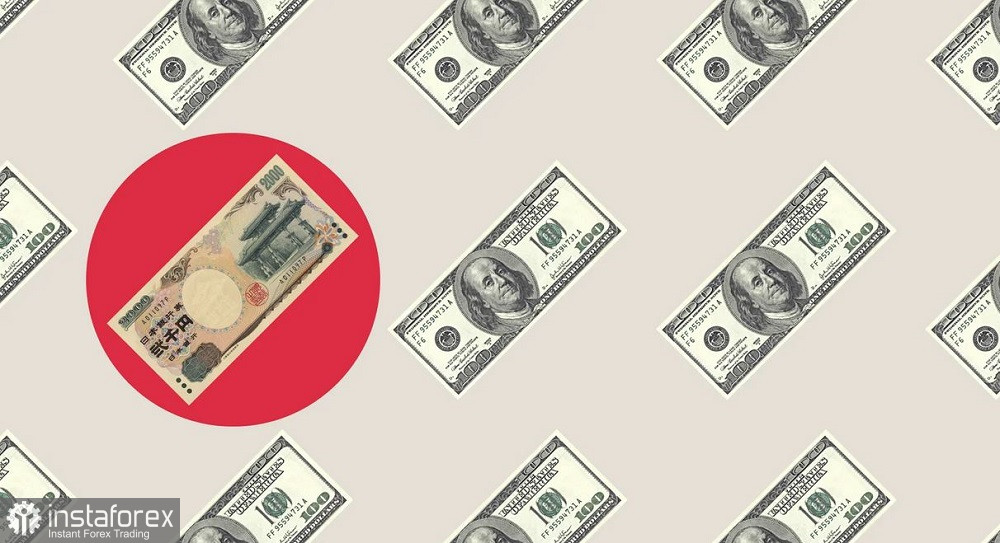The USD/JPY pair has been in a zone of price turbulence for almost a month. At the end of October, after much consideration, buyers finally decided to storm the 150 level despite the risk of a retaliatory reaction from the Japanese authorities. The reconnaissance mission went well—traders settled above the 150.00 target, while the Japanese government did not dare to intervene again. And since appetite comes with eating, USD/JPY bulls decided not to stop at what they had achieved and continued to climb higher and higher.
After reaching a yearly high on November 13 (151.92), traders did stop, presumably remembering that at the level of 151.96, the patience of Japanese authorities had burst in 2022—a massive currency intervention was conducted, strengthening the yen by several thousand points.
However, it was not so much the fear of retaliatory measures that reversed the pair but the weakening of the greenback amid a slowdown in October inflation in the United States. USD/JPY sellers took the initiative and pulled the pair down to 147.17 (a two-month price low). In this price area, interest in long positions reappeared. Traders played out the American inflation reports, after which the dollar gradually began to recover its positions. Buyers played on this, returning the pair to the 149 level over the week.

In essence, the yen returned to its initial position—throughout most of October, the pair traded in the price range of 148.50-149.90. The weak yen pushed the pair upward, but as it approached the borders of the 150 level, the upside momentum faded.
Today, the pair is also within the 149 level. Given the current fundamental background, it can be assumed that USD/JPY buyers will again test the resistance level at 150.20 (the middle line of the Bollinger Bands indicator on the daily chart) to establish themselves in the 150 area. Despite the overall weakness of the greenback, this scenario seems most likely. Unlike other major pairs, USD/JPY is a weaker sparring partner for the dollar.
The key issue for the yen is the policy of the Bank of Japan. In a recent interview, BOJ Governor Kazuo Ueda once again stated that unwinding ultra-loose monetary policy would be a "serious problem" for the Japanese regulator. He noted progress in achieving inflation targets but stated it was still too early for the regulator to determine the timing of normalizing monetary policy.
It's worth noting that these words were spoken before the release of inflation growth data in Japan for October. The key indicators once again demonstrated their "stubbornness," thus delaying the prospects of the Japanese regulator calibrating its monetary policy.
Thus, today's published overall Consumer Price Index, after a two-month downward trend, has risen again to 3.3% (the highest growth rate since July of this year). The Core CPI, excluding fresh food (a key indicator tracked by the Bank of Japan), rose by 2.9% on an annual basis in October, following a 2.8% increase in September. This inflation indicator has been above the Bank of Japan's target of two percent for 19 consecutive months.
The report's structure indicates that in October, food prices increased the most (by 8.6%), followed by furniture and household goods (by 6.9%). Clothing and footwear also increased in price (by 3%), as did transportation (by 3.2%), educational services (1.3%), and medical services (by 2.3%). Meanwhile, utility services became cheaper (by 10%), primarily due to the decrease in the cost of electricity and gas.
As we can see, Japan's inflation remains above the target level and is gradually gaining momentum. This report should be considered in conjunction with another macroeconomic data published last week. It was revealed that Japan's GDP in the third quarter fell by 0.5% (the first contraction since the fourth quarter of 2022). Experts had forecast a more modest decline of 0.1%. The second-quarter result was revised downward (growth of 1.1% instead of the previously announced 1.2%). On an annual basis, the Japanese economy contracted by 2.1% (compared to the forecasted contraction of 0.6%), following a 4.5% growth in the second quarter of this year.
These results are not in favor of the yen. It is evident that the Bank of Japan will not consider exiting its current policy in the foreseeable future (even hypothetically), maintaining loyalty to the ultra-loose approach. Meanwhile, many Federal Reserve representatives still demonstrate a hawkish stance, stating that the interest rate will be held at the current level for an extended period and, if necessary, the central bank will resort to additional tightening of monetary policy.
The current fundamental background contributes to the rise of USD/JPY—at least towards the first resistance level of 150.20, which corresponds to the middle line of the Bollinger Bands indicator on the daily chart.
 English
English 
 Русский
Русский Bahasa Indonesia
Bahasa Indonesia Bahasa Malay
Bahasa Malay ไทย
ไทย Español
Español Deutsch
Deutsch Български
Български Français
Français Tiếng Việt
Tiếng Việt 中文
中文 বাংলা
বাংলা हिन्दी
हिन्दी Čeština
Čeština Українська
Українська Română
Română

